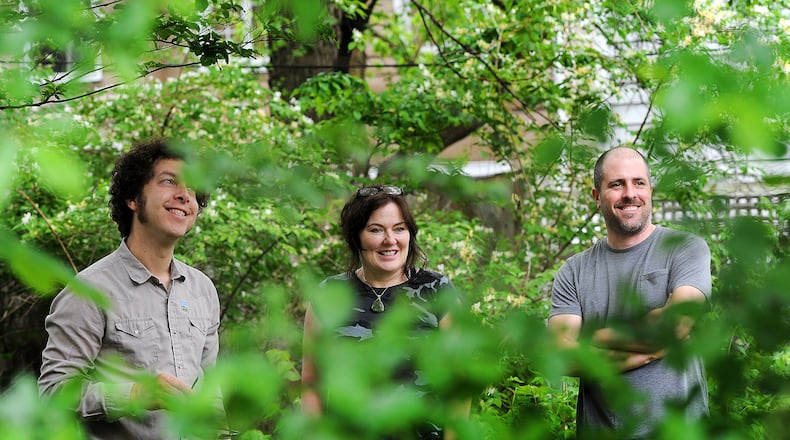“Quilts are colorful, and each one is unique,” McEwan said. “The creator also has an opportunity to express themselves in terms of pattern and color.”
McEwan, an ecologist, said Dayton residents can do more for the environment just by taking a few steps with their yards: mowing less frequently and parting ways with their use of insecticides and herbicides that only allow turf grass to survive.
According to NASA, enough yard space to fill all of Texas space exists in the United States.
Maintaining this expanse of lawn space is costly, McEwan said. He estimated that mowing infrequently – every three weeks or longer is ideal if a property resident is comfortable with that – and skipping out on spraying can save property residents hundreds of dollars each year, as well as save them time.
Not only is the application of pesticides harmful to the area’s major pollinators like bees, it can also be harmful to people, McEwan said. Studies have pointed to lawn maintenance chemicals are cancer-causing.
McEwan said the fuel used to power mowers and other lawn maintenance tools also contributes to climate change.
When lawns are not treated by herbicides, they’ll be greeted by flowering plants like clover, mint, wild strawberry and dandelions, McEwan said. Residents can take other steps to plant native flowers to add more color to their space, too.
Glenna Jennings, community engagement director at the University of Dayton, said the look and feel of American lawns is a cultural “beauty standard” that developed long ago.
Jennings and her partner Ryan Shaffer will be opting for their own quilt lawns this year at their Dayton residence.
Because Jennings is an avid traveler, she felt confined during the pandemic. This made her reconnect with her own backyard and garner interest in the culture surrounding Americans and their yard spaces, though. This was captured in her photo project, “In Our Own.”
Quilt lawns – a part of the Promise Garden initiative – are one step people can take in Dayton Regional Green’s “Bring Your Green” challenge, which encourages people to make small changes in their lifestyles to become more eco-friendly.
Dayton Regional Green director Lamees Mubaslat said her organization is creating signs for people who want to have their own quilt lawns, flagging neighbors to the green initiative.
“People are becoming more cognizant of chemicals, and it’s catching on,” she said.
Five Rivers Metroparks sustainability manager Tim Pritchard said he’s heard from several residents interested in “rewilding” their yards already, calling it a “burgeoning trend.”
Residents can implement their own quilt lawns without breaking municipal code, Pritchard said.
The city of Dayton, for example, has guidelines for how a yard space can look in the city. Violating those measures can result in a $135 fine in some instances.
The city’s standard includes items related to debris, trash, old furniture and rodents.
Most city measures dealing with plant life on a property request the trees, bushes and more growing in the right-of-way on a property or obstructing oncoming traffic. The city’s neighborhood standard, however, does have a measure about unkempt grass.
Residents can reduce their frequency in mowing while not allowing their grass to become unkempt during seasons where it grows quickly, Pritchard said.
Home Owner’s Associations (HOA) often have their own sets of rules for what the landscapes of their property owners can look like. The newspaper reached out to several Dayton-area HOAs and did not hear back.
Regardless, the quilt lawn concept is more of a spectrum than a stark set of rules, and Pritchard said property owners can opt for what makes them feel comfortable.
McEwan echoed this, saying people who want to be more conscious about the environmental impact of lawn care can take a step at a time to do so.
Pritchard also said people opting for a quilt lawn can do it in a way where it’s mindful of neighbors; for example, using fences to contain prairie grass. He also encouraged households to address invasive plants they may have in their backyards.
Jennings, also a professor of photography at the University of Dayton, is working with Dayton Regional Green to capture the yards of Montgomery County residents who design their own quilt lawns.
About the Author

